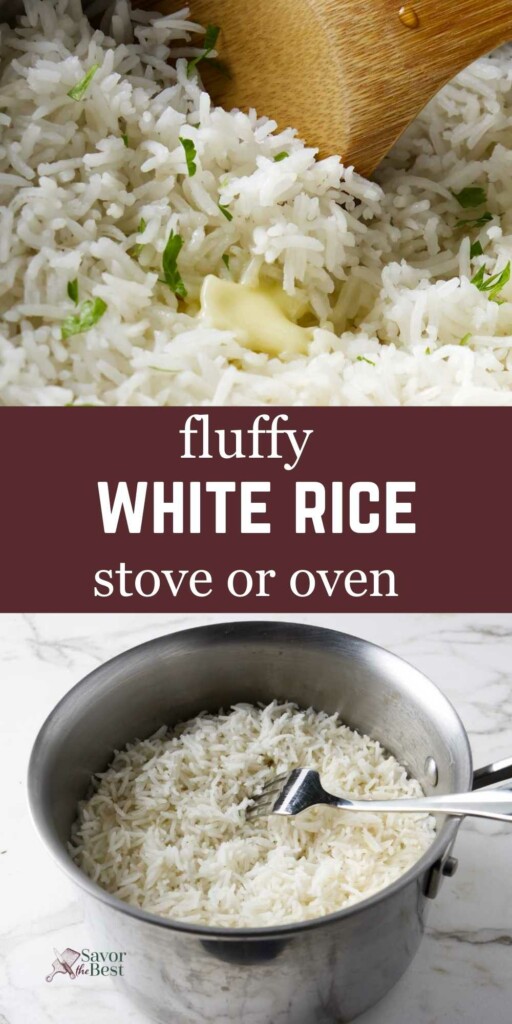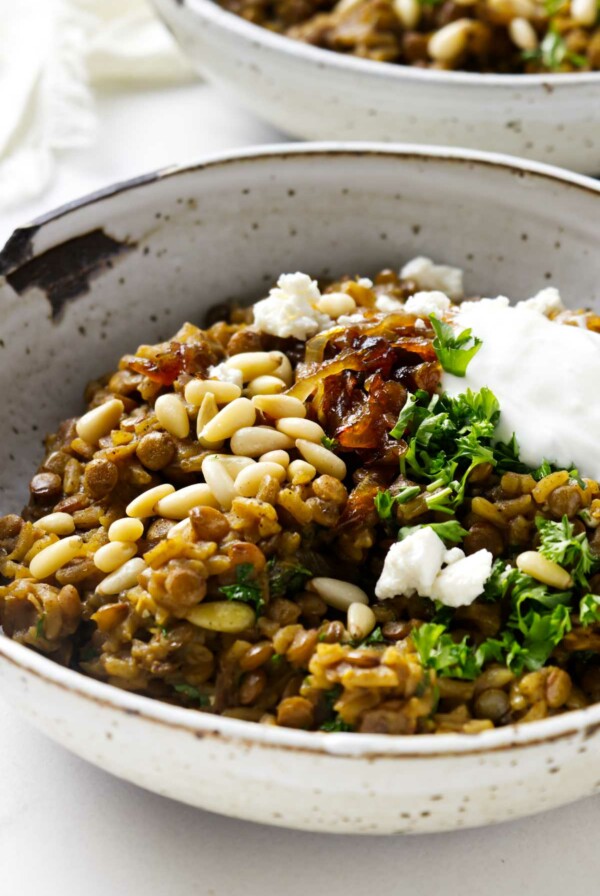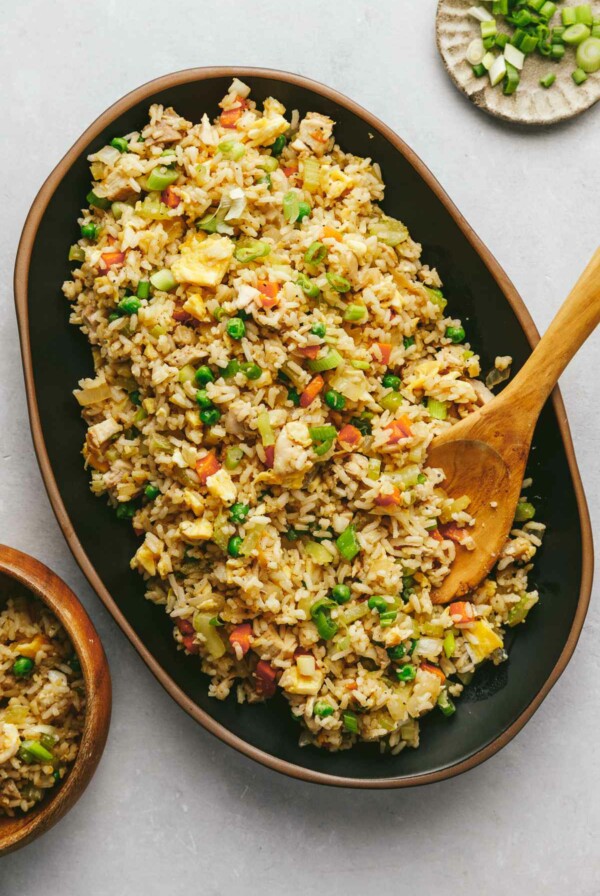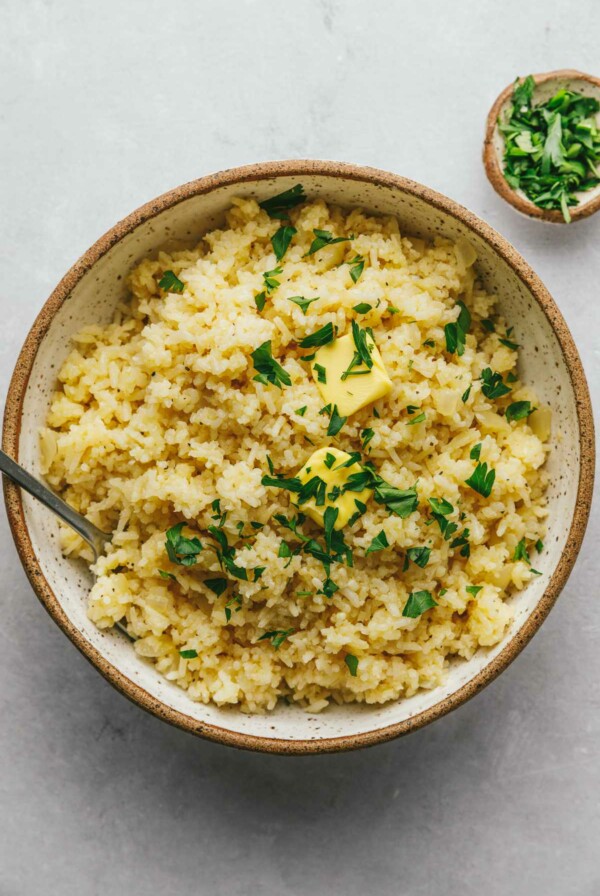This post may contain affiliate links. Please read our disclosure policy. As an Amazon Associate, I earn from qualifying purchases.
Fluffy white rice might seem like a basic staple, but getting it just right? That’s where things can go sideways. This method gives you light, separate grains every time…. none of that sticky, clumpy business.
Serve it under a saucy stir-fry, pile it into burrito bowls, or keep it simple on the side. This foolproof white rice recipe delivers consistent results with minimal fuss. You’ll get tips for both stovetop and oven-baked methods, plus a few small tweaks that make a big difference.
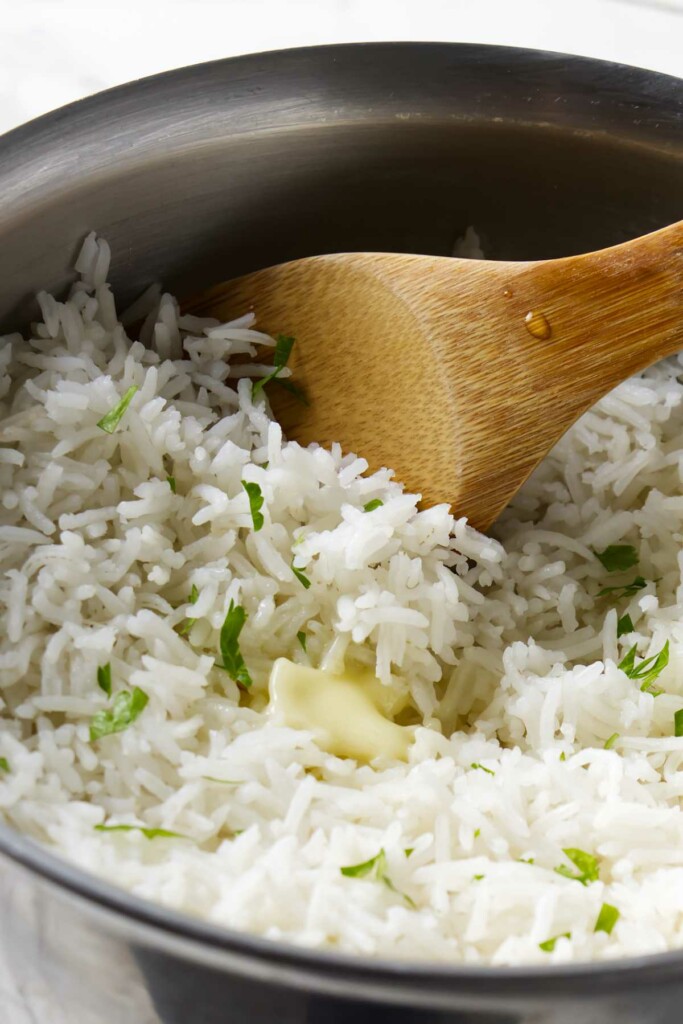
This recipe keeps things simple and versatile—perfect for pairing with just about anything. If you’re after something more flavorful, my garlic butter rice is a great upgrade. Need something stickier for sushi? Head over to my Instant Pot sushi rice for a different technique and texture.
Here is Why This Recipe Works
Fluffy, not gummy. Using the right water ratio means you get individual grains—not a gluey blob.
Stovetop or oven. Two solid methods, depending on your mood (or whether your stove is already busy with dinner).
Troubleshooting tips. Dry rice? Sticky mess? We’ve got simple fixes so you’re not left guessing.
Scales like a champ. Make just enough for lunch or a big batch for meal prep, this recipe plays nice either way.
No rinsing required (really). When your water ratio is on point, you can skip the rinse and still get fluffy results.
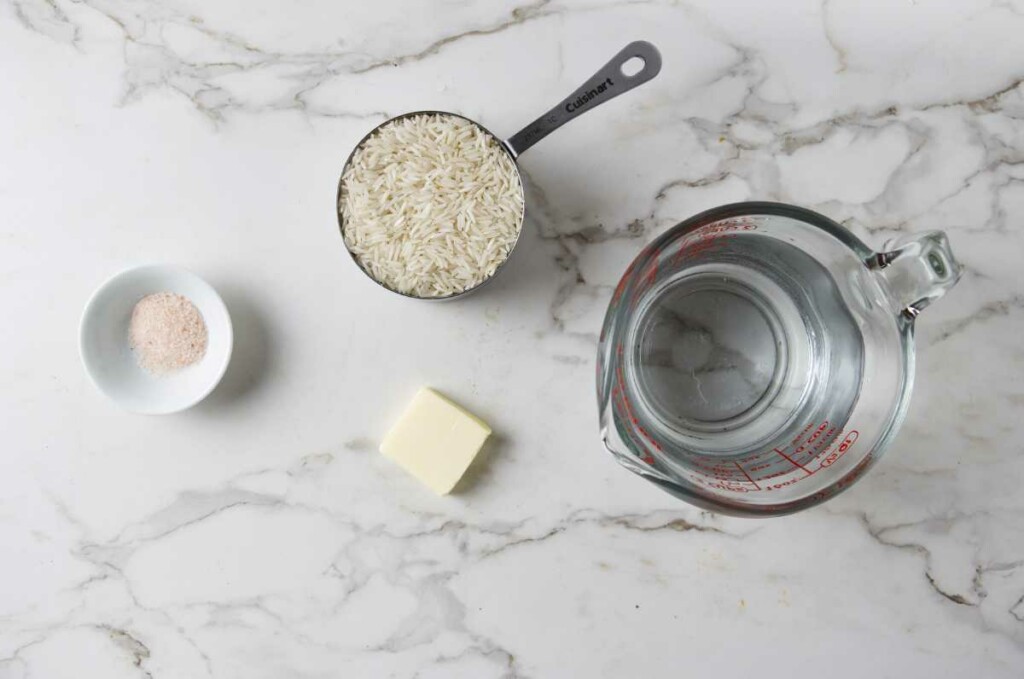
Recipe Tips
Rinse… if it needs it. If the rice looks dusty or has debris, give it a quick rinse. Otherwise, if you’re using the right water ratio and long-grain rice, you can usually skip it. Just know that rinsing adds moisture, so you might want to slightly reduce the water in the pot if you rinse.
Use a tight-fitting lid. Steam is key. If it escapes, your rice could end up undercooked or uneven.
Don’t peek. Lifting the lid mid-cook might seem harmless, but it messes with the moisture and timing.
Let it rest. The steam finishes the job. This short step makes a big difference in texture.
Adjust as needed. If your rice turns out dry, try adding a couple tablespoons more water next time.
Use the right pot size. Too small and it’ll bubble over. Too wide and the water can evaporate too quickly.
Watch the heat. Once it boils, drop it to low and leave it alone. Too much heat and the bottom will scorch before the top is done.
Altitude matters. If you live at a higher elevation, you might need a bit more water and a slightly longer cook time. Rice can be picky like that.

Troubleshooting Fixes for White Rice:
Add 2 to 4 tablespoons of water, cover the pot, and return it to low heat for 5 more minutes. Let it rest again before fluffing. Next time, bump up the water ratio by 2 to 4 tablespoons.
It either had too much water or didn’t cook long enough. You can uncover the pot and let it sit over low heat for a few minutes to let the extra moisture evaporate. If it’s really wet and cooked completely, go ahead and strain it through a fine-mesh sieve, then return it to the pot and let it sit uncovered for a few minutes to release steam before fluffing.
That usually means the heat was too high after it started boiling. Make sure to reduce the heat as soon as it hits a boil, and use a heavy-bottomed pan to help prevent scorching.
Too much water is often the main reason—especially if the ratio is off or the rice simmered too long. Keep your water ratio in check (no more than 1¾ cups per cup of rice) and don’t stir during cooking. That’s when things get sticky (literally).
Some folks swear by it, and it can help prevent clumping, especially if you’re using short-grain rice or cooking with more water. But if you’re working with long-grain white rice and using the right water ratio (think 1:1.5 to 1:1.75), you don’t need to rinse the rice unless it looks dirty.
Pin this now to find it later!
Pin It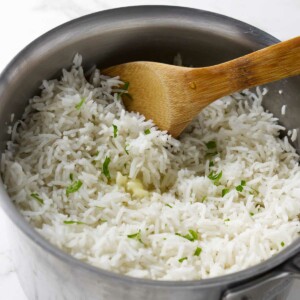
Fluffy White Rice
If you make this recipe, please leave a star rating and comment.
Ingredients
- 1 cup long-grain white rice, Jasmine, Basmati, or Texmati work great
- 1½ cups water, or 1¾ cups for slightly softer rice
- ¾ teaspoon salt
- 1 tablespoon butter, or olive oil; optional
Instructions
Stovetop Method:
- Rinse the rice under cold water in a fine-mesh strainer until the water runs mostly clear. This helps remove excess starch so the rice cooks up fluffy instead of gummy.
- In a medium saucepan, combine the rinsed rice, water, salt, and butter or oil if using. Bring it to a boil over medium-high heat.
- Once it starts to boil, give it a quick stir, reduce the heat to low, and cover the pot with a tight-fitting lid.
- Let it simmer undisturbed (no peeking!) for 18–20 minutes, or until all the water is absorbed.
- Remove from heat and let it sit, covered, for 5–10 minutes. This resting step lets the steam finish the cooking and evens out the texture. Fluff gently with a fork before serving.
Oven Method:
- Preheat your oven to 375°F and bring your water to a boil.
- Place 1 cup of rinsed long-grain white rice in a 2-quart oven-safe baking dish (like a glass or ceramic dish with a lid, or cover tightly with foil).
- Add 1½ cups of boiling water, ½ teaspoon salt, and 1 tablespoon butter or oil, if using. Stir gently to combine. Cover the dish tightly with a lid or foil.
- Bake for 25 minutes, then check to see if the water has been fully absorbed. If needed, bake for another 5 minutes.
- Remove from the oven and let it sit, still covered, for 5–10 minutes. Fluff with a fork before serving.
Notes
- Rinse… if it needs it. If the rice looks dusty or has debris, give it a quick rinse. Otherwise, if you’re using the right water ratio and long-grain rice, you can usually skip it. Just know that rinsing adds moisture, so you might want to slightly reduce the water in the pot if you rinse.
- Jasmine rice cooks softer. Of all the long-grain options, jasmine rice tends to turn out a bit softer and stickier. If you want it fluffier, use 1¼ cups water per cup of rice instead of 1½
- Use a tight-fitting lid. Steam is key. If it escapes, your rice could end up undercooked or uneven.
- Don’t peek. Lifting the lid mid-cook might seem harmless, but it messes with the moisture and timing.
- Let it rest. The steam finishes the job—this short step makes a big difference in texture.
- Adjust as needed. If your rice turns out dry, try adding a couple tablespoons more water next time.
- Use the right pot size. Too small and it’ll bubble over. Too wide and the water can evaporate too quickly.
- Watch the heat. Once it boils, drop it to low and leave it alone. Too much heat and the bottom will scorch before the top is done.
- Altitude matters. If you live at a higher elevation, you might need a bit more water and a slightly longer cook time.
- Using the oven method? Make sure to bring the water to a boil first.
Troubleshooting Tips
- Too dry or undercooked? Add 2–4 tablespoons water, cover, and cook on low 5 more minutes. Let it rest again.
- Too wet? Uncover and cook on low to evaporate moisture. If very wet, strain and return to pot to steam off excess.
- Rice stuck to the bottom? Heat was likely too high. Lower the heat after it boils and use a heavy-bottomed pot.
- Clumpy or gummy? Usually due to too much water or overcooking. Use no more than 1¾ cups water per cup of rice and avoid stirring.
- Do I have to rinse? Not if you’re using long-grain rice and the right water ratio. Rinse only if it looks dusty or dirty.
Storing Leftovers
Let the rice cool completely, then transfer it to an airtight container and refrigerate for up to 4 days. Leftovers are perfect for shrimp fried rice. To freeze, spread the rice in a thin layer on a parchment-lined baking sheet and freeze until firm. Then transfer it to a freezer-safe container. Reheat with a splash of water in the microwave (covered loosely) or in a saucepan over low heat.Nutrition
Nutrition information is automatically calculated, so should only be used as an approximation.
 Like this recipe? Rate & comment below!
Like this recipe? Rate & comment below!Perfect White Rice the Easy Way
Whether you’re building burrito bowls or need a no-fuss side dish, this fluffy white rice recipe earns its keep. It’s reliable, flexible, and doesn’t require fancy tools or extra steps. Just simple, well-cooked rice that behaves like it’s supposed to—and yes, that’s something to get excited about.

